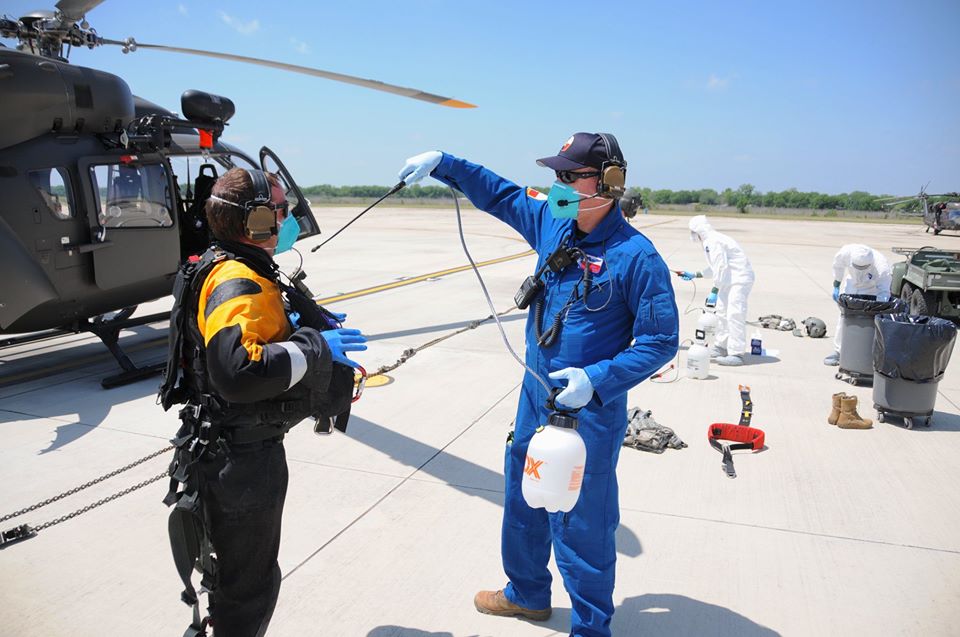Helicopter search and rescue teams prepare for hurricanes, water rescues and coronavirus

SAN ANTONIO – Severe weather, hurricane season and the coronavirus are vital rescue skills for Texas A&M Task Force 1 (TX-TF1) and the Texas Military Forces as they prepare helicopter search and rescue teams to keep survivors and responders safe during a disaster.
Search and Rescue aviation units prepared for future hurricanes, water rescue situations or other wide-area natural disasters in May at Martindale Army Airfield in San Antonio. Typically, helicopters may be used in flooding events to rescue survivors trapped on rooftops or in attics, flooded vehicles, trees or areas where boats or high-profile vehicles cannot reach them.

Thirteen members of the TX-TF1 helicopter search and rescue team (HSART) joined the Texas Military Department’s Army National Guard soldiers operating UH60 Blackhawk and LUH72 Lakota helicopters for training aircraft to prepare for flooding and hurricane season. Aircrews and task force rescue personnel conducted hoist rescue training, focusing on performing hoist operations while exercising COVID-19 precautions, including wearing PPE such as N95 masks and exam gloves, said TX-TF1 Helicopter Search and Rescue Manager Brett Dixon.
Crew members also practiced and refined procedures for disinfecting the interior cabins of the helicopters, rescue equipment, and personnel after a simulated COVID “positive” rescue mission. Helicopter search and rescue teams (including pilots, hoist operators, and search and rescue technicians) flew missions rescuing simulated survivors with COVID-19 and evacuating them to safety.

“One of our main objectives was to see how much time it realistically takes to disinfect the cabin, crew, and rescue equipment between rescues, so we will know what kind of tempo we will be able to maintain when it’s all-hands-on-deck for a hurricane or wide-area flooding event,” Dixon said.
“We also found some challenges with communicating while wearing PPE. The microphones on the flight helmets and headsets have a hard time picking up transmissions through a N95 mask in a high-noise environment, like the inside of a running helicopter. We had to work through the best way to wear the gear and communicate with each other. They say that 55% of communication is visual. It can be hard when you’re wearing a flight helmet with a N95 mask covering most of your face and there is already a lot of noise.”
The HSART is a joint program between TX-TF1 and Texas Military Forces — a first-of-its-kind partnership in the U.S. that utilizes task force rescue personnel with swiftwater rescue experience and aviation assets and crews from the military. Currently, there are 24 active HSARTs and managers in the program, which has served a model for other states.

As always, TX-TF1 reminds citizens to tune into your local media and news sources for up-to-date weather forecasts and reports for your area. Never drive through water across a roadway. Remember to Turn Around, Don’t Drown!
About Texas A&M Task Force 1
TX-TF1 is sponsored by the Texas A&M Engineering Extension Service (TEEX) and has deployed over 150 times since 1997. The team can be activated by the Texas A&M Division of Emergency Management or as one of the Federal Emergency Management Agency’s 28 sanctioned urban search and rescue teams.
Visit the Texas A&M Task Force 1 Website: www.texastaskforce1.org/
Follow Texas A&M Task Force 1 on Facebook: www.facebook.com/txtf1
